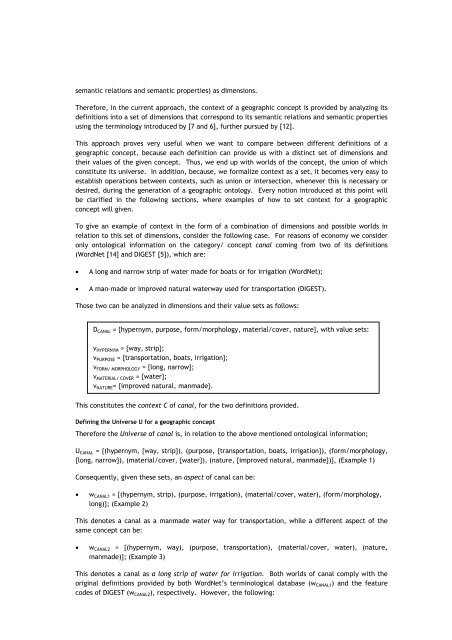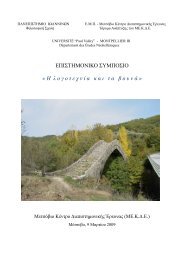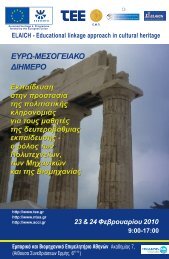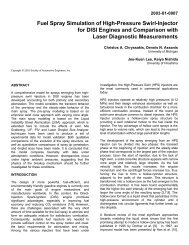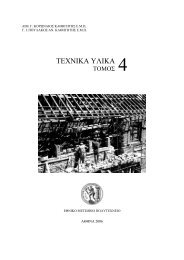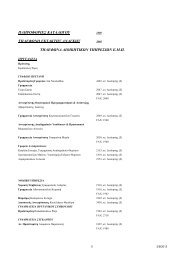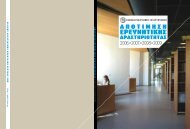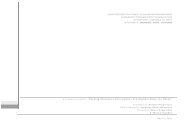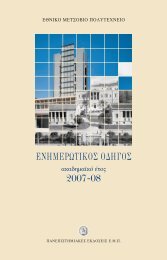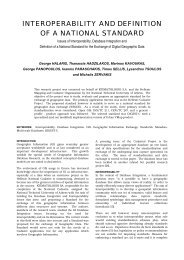In the field of linguistics we make reference herein, to the work by Bunt [4] who identifies a numberof communicative functions of dialogue control acts, very similar to our notion of dimensions forsetting context, that will be analyzed later on. The contextualization of ontologies has also beentreated in [2], and it resulted in introducing an extension of OWL, C-OWL, for providing formalcontext to ontologies.PROPOSED METHODOLOGYAs already mentioned we propose a framework for formalizing context using dimensions d i . Theconcept of dimensions has also been used in [10], for providing context to semi-structured data onthe web. Furthermore, they have been used in Intensional HTML [13], which allows a web page toappear in different forms, due to the use of variants.Dimensions in our approach, are specific variables that when combined give meaning to ontologicalinformation. These dimensions have a set of possible values v di that substantiate them. Therefore,a context C of a concept c, is given by the following equation:C c = {d 1 , d 2 , …, d n } ″ { v d1 , v d2 , …, v dn }, (Equation 1)To form a context C any number of dimensions that constitute its set D, is acceptable (even onlyone) as long as the intended meaning is adequately given. Even though, in theory, a geographicconcept’s context can be formed using only one dimension, in practice, it is very difficult toestablish context that way and include it in an ontology, due to the complexity and diversity of thedomain. Furthermore, as it will be articulated hereinafter, sometimes the dimensions of the contextare chosen based on specific requirements/ axioms of the ontology designer. It is important to stateat this point, that a context C, is not constituted only by a unique set of dimensions. To clarify this,the reader should consider what follows in the next sections of this manuscript.A Theory of All Possible WorldsLet us call D = {d 1 , d 2 , d 3 } and D’ = {d 1 , d 2 } two different sets of dimensions, with value sets: v d1 = {a,b, c}, v d2 = {e} and v d3 = {f, g} for d 1 , d 2 , and d 3 respectively, that constitute a context C underdifferent circumstances. The set {(d 1 , b), (d 2 , e), (d 3 , g)} is a world w in relation to D, while the set{(d 1 , a), (d 2 , e)} is a world w’ in relation to D’. The set of all possible worlds in relation to a set ofdimensions D is called the universe U of D. For instance, the universe U of D, for the previousexample is the set:U = {(d 1 , a), (d 1 , b), (d 1 , c), (d 2 , e), (d 3 , f), (d 3 , g)}, (Equation 2)This way, we view context through the notion of world, more specifically the notion of possibleworlds, which is widely used in different theories of semantics and logic (such as model theoreticsemantics and model logic respectively, for a discussion on these, the reader can refer to [9]) orintensional semantics [8].Assumptions over DimensionsTo be able to use this formalism of context, several assumptions over dimensions and their valuesets are made. These are:• Dimensions are orthogonal. This means that one dimension’s values do not affect those of theothers;• The sets of dimensions that form the context are considered non-empty and finite;• The values sets of the dimensions are considered non-empty and finite as well.SETT<strong>IN</strong>G THE <strong>CONTEXT</strong> FOR A <strong>GEOGRAPHIC</strong> CONCEPTTo establish context for a geographic concept we make use of the guidelines of geographicontological design presented in [12] and consider all properties of geographic concepts (therein
semantic relations and semantic properties) as dimensions.Therefore, in the current approach, the context of a geographic concept is provided by analyzing itsdefinitions into a set of dimensions that correspond to its semantic relations and semantic propertiesusing the terminology introduced by [7 and 6], further pursued by [12].This approach proves very useful when we want to compare between different definitions of ageographic concept, because each definition can provide us with a distinct set of dimensions andtheir values of the given concept. Thus, we end up with worlds of the concept, the union of whichconstitute its universe. In addition, because, we formalize context as a set, it becomes very easy toestablish operations between contexts, such as union or intersection, whenever this is necessary ordesired, during the generation of a geographic ontology. Every notion introduced at this point willbe clarified in the following sections, where examples of how to set context for a geographicconcept will given.To give an example of context in the form of a combination of dimensions and possible worlds inrelation to this set of dimensions, consider the following case. For reasons of economy we consideronly ontological information on the category/ concept canal coming from two of its definitions(WordNet [14] and DIGEST [5]), which are:• A long and narrow strip of water made for boats or for irrigation (WordNet);• A man-made or improved natural waterway used for transportation (DIGEST).Those two can be analyzed in dimensions and their value sets as follows:D CANAL = {hypernym, purpose, form/morphology, material/cover, nature}, with value sets:v HYPERNYM = {way, strip};v PURPOSE = {transportation, boats, irrigation};v FORM/ MORPHOLOGY = {long, narrow};v MATERIAL/ COVER = {water};v NATURE = {improved natural, manmade}.This constitutes the context C of canal, for the two definitions provided.Defining the Universe U for a geographic conceptTherefore the Universe of canal is, in relation to the above mentioned ontological information;U CANAL = {(hypernym, {way, strip}), (purpose, {transportation, boats, irrigation}), (form/morphology,{long, narrow}), (material/cover, {water}), (nature, {improved natural, manmade})}, (Example 1)Consequently, given these sets, an aspect of canal can be:• w CANAL1 = {(hypernym, strip), (purpose, irrigation), (material/cover, water), (form/morphology,long)}; (Example 2)This denotes a canal as a manmade water way for transportation, while a different aspect of thesame concept can be:• w CANAL2 = {(hypernym, way), (purpose, transportation), (material/cover, water), (nature,manmade)}; (Example 3)This denotes a canal as a long strip of water for irrigation. Both worlds of canal comply with theoriginal definitions provided by both WordNet’s terminological database (w CANAL1 ) and the featurecodes of DIGEST (w CANAL2 ), respectively. However, the following:


